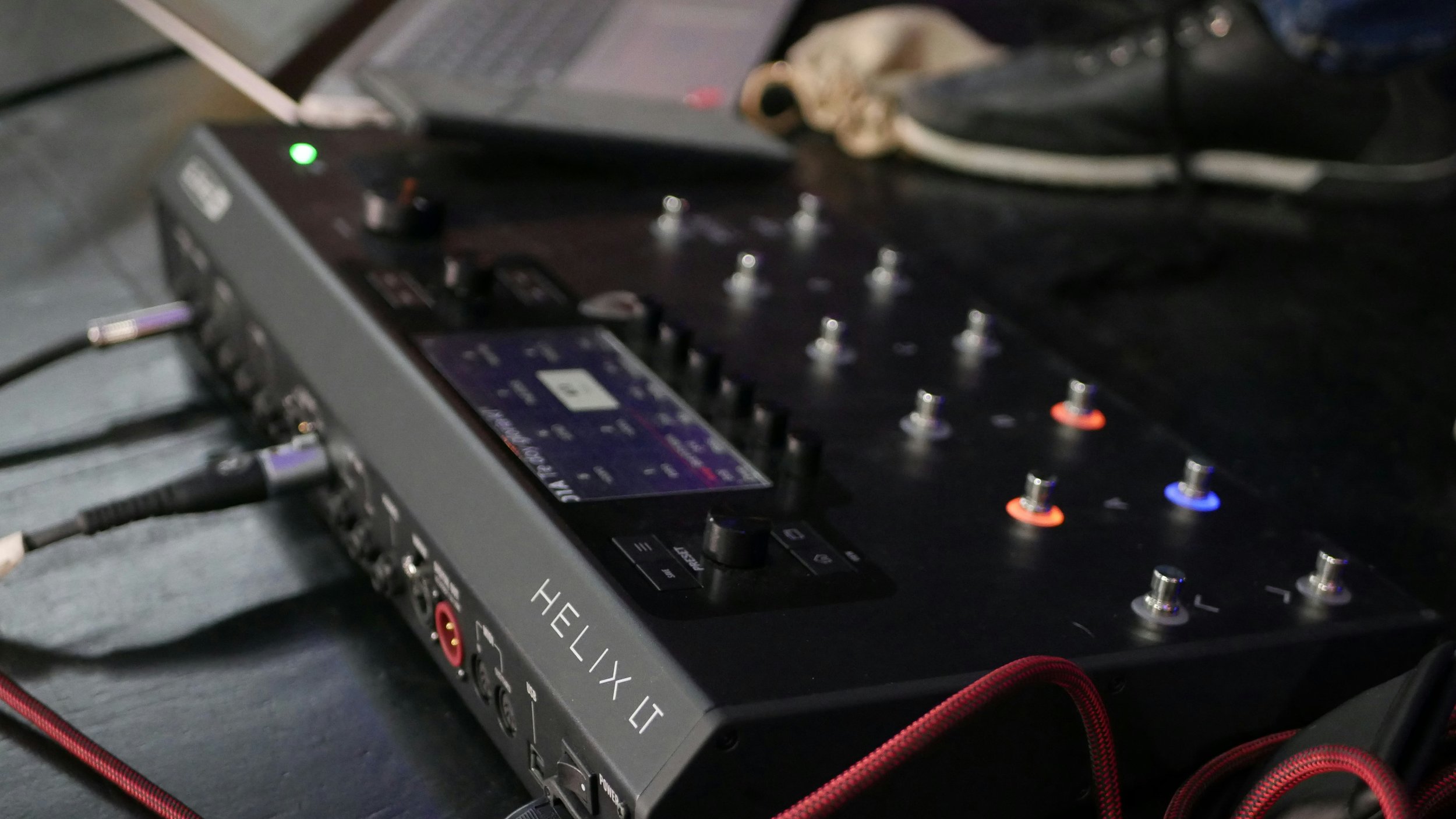Re-amping: What is it and is it even necessary?
It’s a fairly common practice in the recording industry, but many home recording enthusiasts may be unaware of its existence. If you’ve ever wondered how professionals get that raw, natural sound with their guitars and basses, re-amping is one way to achieve it. Here we explain what re-amping is, how to do it with your own tracks, and what are some different ways to re-amp a signal. Curious? Keep reading to find out!
Photo by Sergio Capuzzimati on Unsplash
What is Re-amping?
Re-amping is the process of recording an instrument’s signal and then using an external device to send that signal back through an amp or an effects pedal connecting to a speaker so that the sound can be recorded again. Essentially, re-amping is a means of ‘recording your amp’ by plugging an instrument’s output directly into a direct box, pre-amp, or audio interface and then ‘resending’ the signal back through an amp for the benefit of the recording engineer. Re-amping can be useful in several different scenarios. For example, if you have a particularly cramped space in which to record, you may not have enough room to fit a full-sized amplifier. In this case, re-amping is a great way to still achieve the desired sound. Alternatively, if you want to experiment with different amplifier sounds, but don’t have the time to change your rig for each sound, re-amping is a great option. In addition to these examples, re-amping is also a common practice in music production because it allows engineers to use a variety of different amplifiers to achieve a consistent tone throughout the recording process.
Why is Re-amping Necessary?
As discussed above, re-amping is a common practice among recording engineers. However, there are many different reasons why re-amping is necessary. In general, the process of re-amping is used to ensure that your guitar signal is as clean as possible. Why? Because if you were to plug your guitar directly into a mixing board or audio interface, the signal would almost certainly be too ‘dirty’ and ‘noisy’ for optimal recording. Essentially, your guitar’s signal is much too ‘raw’ to be used during a recording session. Re-amping is used to clean up this signal by sending it through a pre-amp, direct box, or audio interface to boost the volume and improve the signal-to-noise ratio of the guitarist’s output. Essentially, a pre-amp or direct box is used to boost the ‘volume’ of the guitar signal so that it is usable during a recording session. In addition to cleaning up your signal, re-amping is also used to experiment with different amplifier sounds. In many cases, it is not the musician’s amplifier that is used during a recording session. Instead, it is a combination of effects, pedals, and amplifiers that are used to achieve the desired sound.
Different Types of Re-amping Devices
Pre-amps, direct boxes, and audio interfaces are all different types of devices used to re-amp a signal. The pre-amplifier, or pre-amp, is used to boost the volume of an audio signal. Essentially, the pre-amp boosts the signal of the guitarist to a level where it can be used during a recording session. In addition to boosting the signal, pre-amps are also used to change the tone of the signal. For example, a guitarist may use a pre-amp to add a bit of ‘crunch’ to their signal. In this case, the pre-amp is used to boost the ‘mid-range’ frequencies of the guitar signal and is often used in conjunction with an overdrive or distortion pedal. Direct boxes are also used to re-amp a signal.
A DI box converts the high-impedance signal from the guitar to a lower impedance mic level signal so it can be connected directly to a mixer, audio interface or other device without any adverse effects. An audio interface is another type of re-amping device. As its name suggests, an audio interface is used to re-amplify the guitar signal and is often connected directly to the computer during a recording session. Essentially, an audio interface is a device used to convert the guitar’s acoustical signal to a digital signal so that the computer can process and read during a recording session. In addition to amplifying the signal, an audio interface may exude a different ‘character’ by changing the tone of the guitar signal.
Photo by Joel Chavarría on Unsplash
Final Words
Re-amping is a common practice among recording engineers and is used to apply processing effects on an instrument’s signal and experiment with different amplifier sounds. Essentially, re-amping is a means of ‘recording your amp’ by sending your guitar’s signal through an external device and then ‘resending’ the signal back through an amplifier. Additionally, re-amping is used to experiment with different amplifier sounds and different effects processors on your guitar signal. For more short video tips and tricks on mixing music and other audio-related topics, follow us on Instagram @anadigisoundlab.
21 April 2023


